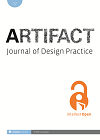-
oa Can participatory design support the transition into innovative learning environments?
- Source: Artifact, Volume 6, Issue 1-2, Dec 2019, p. 7.1 - 7.11
-
- 01 Dec 2019
Abstract
When changing from traditional classrooms to innovative learning environments it is crucial to include the users of the environment in the design process. However, participatory processes might be limited by contrasting expertise, cultures, priorities or project restrictions, which poses a risk to the alignment of spatial design and pedagogical practices. To meet this challenge, the article proposes a post-design participatory activation process aimed to support the transition into new learning spaces. This is exemplified in an empirical case, where co-design methods and physical design objects have been explored as tools to foster spatial literacy and competencies in a fifth-grade cohort (teachers and students), and potentially match pedagogical practices with spatial affordances. Participatory activation is believed to be an ongoing process because learning environments are not static designs – they keep evolving based on people, pedagogies and practices.


